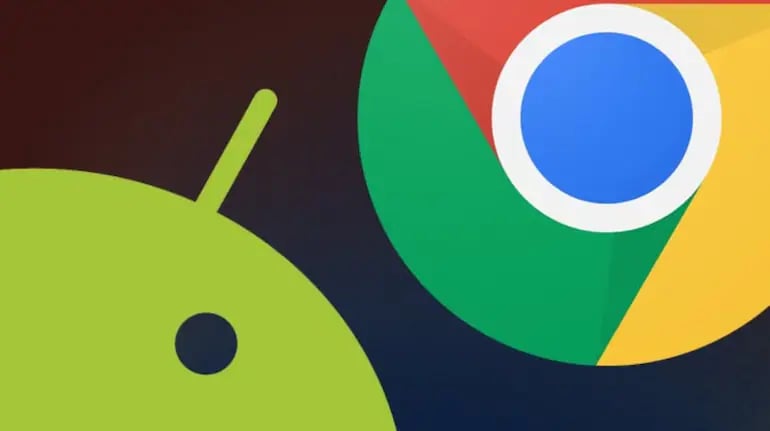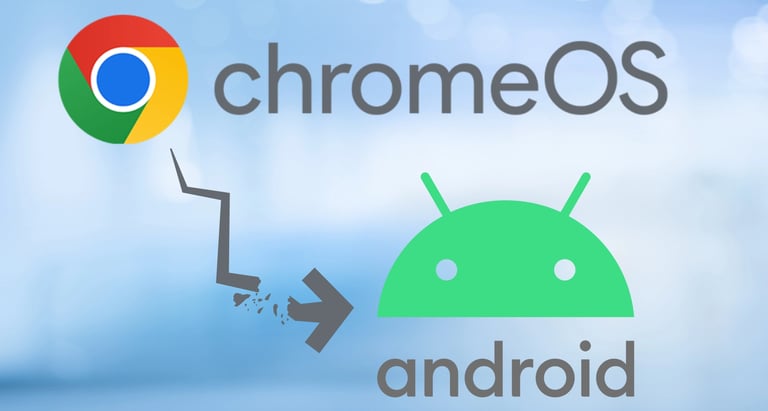Google Is Merging Chrome OS Into Android — Here’s What It Means for You
July 15, 2025 – Mountain View, California Google has officially confirmed that it's working on merging Chrome OS into Android, a move that could reshape the way people use phones, tablets, and laptops. The goal is to create a single, unified operating system that works smoothly across all kinds of devices.
TECHNOLOGY
Thinkbrief
7/15/20253 min read


This step has been rumored for years, and now it's finally happening. The plan is to simplify the experience for users and developers by building one platform that powers everything from mobile phones to desktops.
Why Is Google Doing This?
For a long time, Android and Chrome OS have lived in separate worlds. Android has been the go-to system for smartphones, while Chrome OS focused more on laptops, especially in schools and entry-level markets.
But over time, those lines have blurred. Tablets are more powerful than ever, Chromebooks run Android apps, and users want a consistent experience across all their devices. It no longer makes sense to keep two similar but separate systems going.
According to Sameer Samat, who leads Android and Google Play, the idea is to bring the best of both platforms together. That means fewer duplicated efforts, faster updates, and better support for everything from foldables to keyboards and mice.
What Will the New System Look Like?
The unified platform will be built around Android, not Chrome OS. That means Android will gain many of the features that made Chrome OS appealing, including desktop-friendly tools and better support for multitasking.
We’re already seeing hints of this. Android 16 includes features like:
Resizable windows
Improved multi-window support
External display capabilities
A terminal app for advanced users
A new Chrome browser on Android that supports extensions
These updates suggest Google is preparing Android to work just as well on a laptop as it does on a smartphone.
What Are the Benefits?
A single platform has some big advantages, both for users and developers.
For Users:
Consistency: Whether you're on your phone, tablet, or laptop, the experience will feel familiar and unified.
Smoother device switching: Your apps, files, and settings will follow you across screens.
Better hardware: With Android powering more devices, expect better performance and more innovation in tablets and laptops.
For Developers:
Less fragmentation: Instead of designing apps separately for Android and Chrome OS, developers can focus on one platform.
Wider reach: One app can now run across a broader range of devices.
Faster updates: Google will be able to roll out new features more quickly and efficiently.
What Happens to Chromebooks?
This is still one of the biggest questions. Google hasn’t shared exact details on how existing Chromebooks will be handled, but the transition is expected to be gradual.
It’s likely that new devices will ship with the updated Android-based system, while older Chromebooks may continue receiving support under Chrome OS for a while.
Some newer Chromebooks already run on Android-compatible frameworks, so they might be eligible for future updates. However, older models especially those running on legacy Intel processors could eventually be phased out.
Google has said the change won’t happen overnight, and it plans to keep supporting education and enterprise users during the transition.
Are There Any Concerns?
Not everyone is convinced this will be a smooth ride. While a unified OS has its benefits, there are a few things that could go wrong.
Loss of Chrome OS strengths: Chrome OS is known for fast updates and strong security. Android hasn’t always had the same reputation, so users hope those features carry over.
Device bloat: One of Chrome OS's strengths is its simplicity. Merging it with Android could introduce unnecessary features or complexity.
Fragmentation: If manufacturers customize Android too heavily for laptops and tablets, it could lead to an inconsistent experience something that’s already a challenge on Android phones.
Still, Google seems aware of these risks and says it's committed to preserving the things users love about both platforms.
When Will We See the New System?
There’s no exact date yet, but early signs point to a late 2025 preview and hardware launches in 2026. A new Pixel laptop or tablet might be among the first devices to showcase the merged platform.
In the meantime, expect to see more features from Chrome OS show up in Android updates and vice versa. The transition will be gradual, not sudden, giving users and developers time to adapt.
The Big Picture
Google’s decision to merge Chrome OS into Android is more than just a technical change it reflects how we use technology today. People don’t want to juggle different systems on different screens. They want something that just works, whether they’re answering emails on a phone or editing documents on a laptop.
If Google gets this right, it could create a simpler, more powerful system that makes Android better for everyone. There will be challenges, but the vision is clear: one OS, one experience, across all devices.

